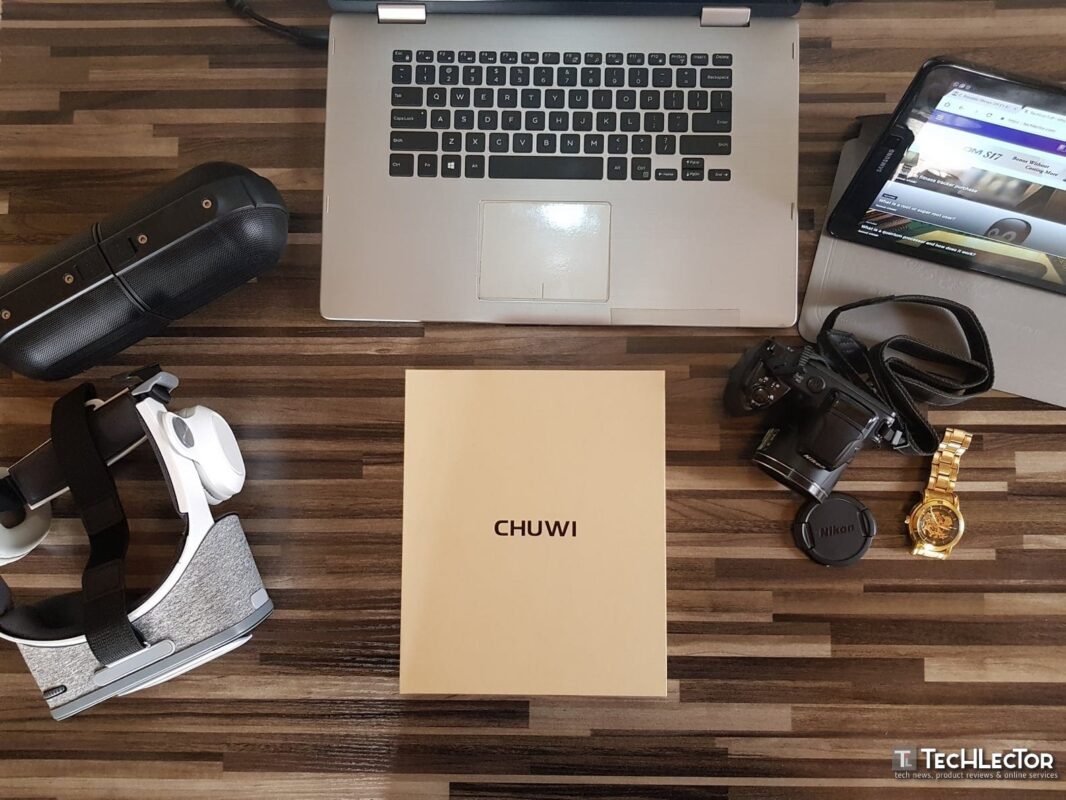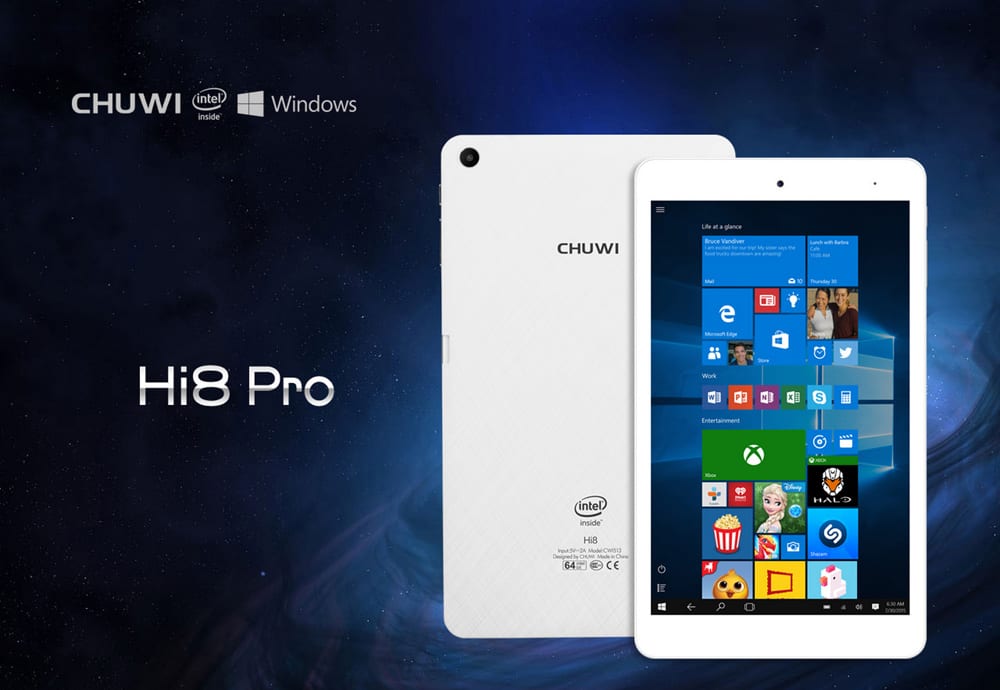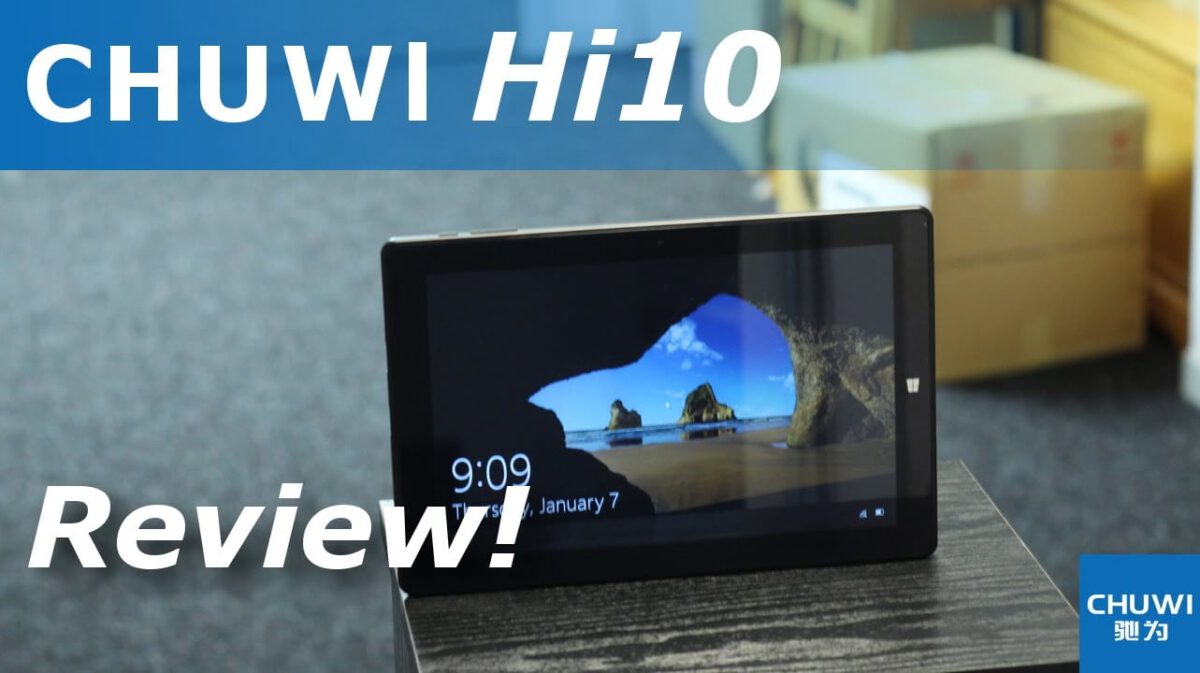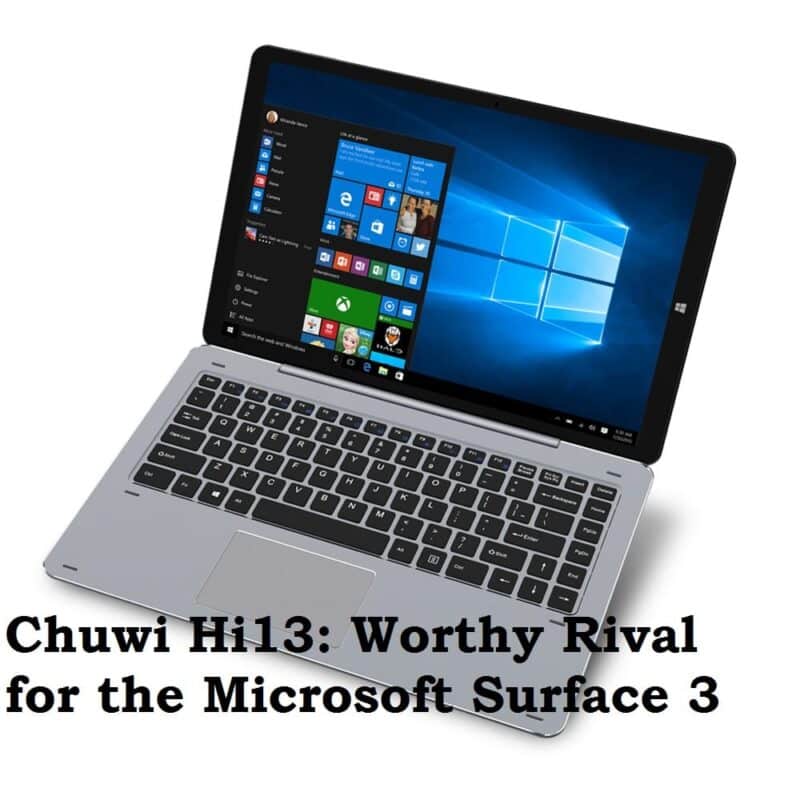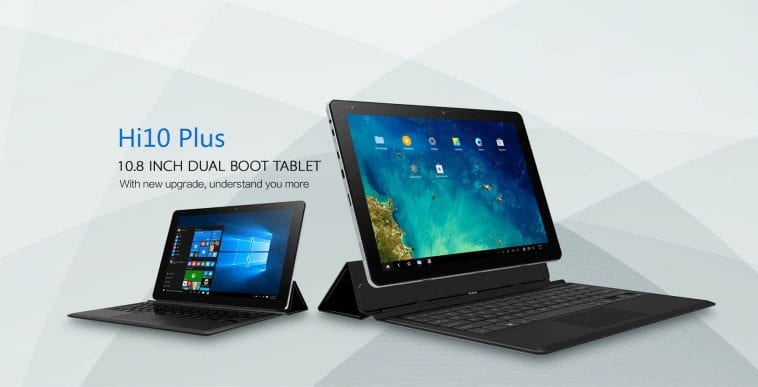Thinking about getting a sub $200 tablet PC with a metal unibody frame and crisp display, then you should consider the Chuwi Hi10 Pro tablet or the Hi10 Plus with a bigger screen. These are genuinely good tablet PCs and at giveaway prices. Both devices run on dual OS – Windows 10 and Android 5.1; you can even get the full laptop experience when you purchase a keyboard. They are alike in a lot of ways and distinguished by a few differences.
Page Contents:
This post is a review on the Chuwi Hi10 Plus and Hi10 Pro tablet PCs which have the dual-booting capability. These tablets are sort of sequels to the original Hi10 with almost similar specifications.
If they are almost similar, the question then is- how are they different from the original Chuwi Hi10 and why should you consider buying any of them? I’ll advise that you continue reading to find out.
Design
Chuwi Hi10 Plus
With the Hi10 Plus, you are presented an all-metal body 10.8 inches tablet that comes with a dual OS. The device is pretty slim at a thickness of 8.5mm and weighs 690 grammes. A turn-off, however, is the obviously large bezels on the tab. Nonetheless, the device is still beautiful to behold and sleek to handle.

Chuwi Hi10 Pro
The Hi10 Pro is very similar to the Hi10 Plus as it still comes in a metal body. However, the Hi10 Pro comes with a 10.1-inch screen as against the 10.8-inch display of the Hi10 Plus. In addition, the Pro version is a bit lighter than the Plus version. The Hi10 Pro weighs 562 grammes. Other design elements like the location of the camera, buttons, logos, etc. remain the same.

Operating System
Chuwi decided to use the same OS on both tablets. The Remix OS 2.0, which is based on Windows 10 and Android 5.1 is used. You can easily switch between Windows and Android at the tap of a button without shutting down the device. How sweet!
Memory and Storage
This is another section where both devices are very similar. RAM size is 4GB on both the Hi10 Plus and the Hi10 Pro. The manufacturer, however, decided to underclock the RAM speed to 1066MHz (although you can take it to 1600MHz, your battery would have to pay for it). The sufficient RAM size allows for a seamless transition between running apps, though you might notice some lagging in heavy games.
Both devices come with 64GB of internal storage which can be expanded to 128GB via a microSD card. However, the available space is only 58.2GB.
Processor and GPU
For processing power, both tablets come with the same CPU- an Intel X5-Z8300 Cherry Trail processor clocked at 1.44GHz. There is an Intel HD 8th gen graphics processor also. This graphics processor is enough for rendering graphics.
The performance of the processor is okay when running light Android and Windows apps. However, it might become frustrating when running heavy apps like graphics intensive games and software. As a result, users shouldn’t expect the tablets to perform as a full-fledged PC.
Display and speakers
While the Chuwi Hi10 Plus comes with a 10.8-inch display, the Hi10 Pro uses a slightly smaller one, a 10.1-inch screen. The screen resolution is a bit different for both devices. The Hi10 Plus has a 1920 x 1280 resolution and the Hi10 Pro with 1920 x 1200. It is noteworthy that both tablets support the multi-touch functionality of up to 10 fingers at a time.
If you are an audiophile, I’m sorry that you’d be disappointed with the speakers of both devices. The stereo speakers are not well placed. This makes them not to be as loud as you’d want them to, even at the maximum volume. However, you can solve the problem by using a good headphone as there is a 3.5mm headphone jack.
Camera
Just like the younger Chuwi Hi10, these two older siblings retain the 2MP front and 2MP back cameras. Though the cameras are of low quality, they should suffice for your video calling needs.
Battery
Battery capacity is a bone of contention when it comes to mobile device specifications. No matter how great a device is, if it doesn’t have a good battery life, then it is almost useless.
Chuwi did an average job here, as they used a fairly long lasting battery for each tablet. An 8400mAh battery is used on the Hi10 Plus and a 6500mAh battery on the Hi10 Pro. The battery life of the Hi10 Plus can last for an average of six hours on Windows 10 and approximately seven hours on Android. The battery life of the Hi10 Pro is about average, due to a fairly high rate of power consumption.
Specs At A Glance
Chuwi Hi10 Pro
| Model name | Chuwi Hi10 Pro |
| Screen size | 10.1 inches |
| Display resolution | 1920 x 1200 pixels |
| Processor speed | 1.44GHz (Quad core) |
| RAM | 4GB |
| ROM | 64GB |
| Camera | 2MP front, 2MP back |
| Dimensions | 261.8×167.3×8.5mm |
| Weight | 562g |
| Battery | 6500mAh |
| Others | USB type C, microSD card slot |
Chuwi Hi10 Plus
| Model name | Chuwi Hi10 Plus |
| Screen size | 10.8 inches |
| Display resolution | 1920 x 1280 pixels |
| Processor speed | 1.44GHz (Quad core) |
| RAM | 4GB |
| ROM | 64GB |
| Camera | 2MP front, 2MP back |
| Dimensions | 261.8×167.3×8.5mm |
| Weight | 690g |
| Battery | 8400mAh |
| Others | USB type C, microSD card slot |
Summary
The Chuwi Hi10 Pro and Hi10 Plus tablet PCs are great laptop-tablet hybrids that offer good value for money. However, the absence of some features like an anti-smudge protection for the screen and lack of LTE support can be an issue for some. Gamers and heavy users can find these devices unappealing to them. However, if you need a tablet just for basic stuff like typing or watching videos, both tabs should perform just fine.


